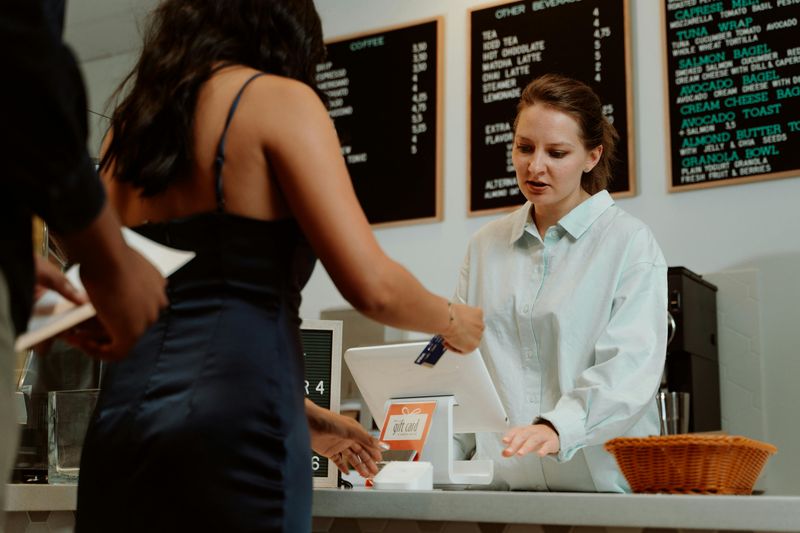10 Sneaky Ways Companies Get You to Overspend

Have you ever walked into a store with the intention of buying just one thing and walked out with an entire shopping bag? Or maybe you’ve gone online for toilet paper and somehow ended up with a new blender, a weighted blanket, and three “must-have” gadgets that were on sale. Don’t worry—you’re not alone. Companies are absolute masters at getting us to spend more than we planned, and they use sneaky psychological tricks to make it happen.
1. Psychological Pricing

It’s not a coincidence that almost everything costs $9.99 instead of $10. That one cent difference makes your brain think the price is in the single digits rather than the double, even though you’re paying basically the same. Psychologists call this “left-digit bias,” and it works like a charm.
The sneaky part is that you feel like you’re saving money, so you’re more likely to add extra items to your cart. Over time, those pennies add up in the company’s favor—not yours.
Next time you see something priced at $19.99, remember that it’s a mental trick, not a bargain. Round it up in your head and you’ll spend less.
2. “Limited-Time” Scarcity Tactics

There’s nothing like a big red countdown timer to make your heart race while shopping online. Companies know that when you feel like time is running out, you’re less likely to think logically about your purchase. Instead, you buy impulsively because you don’t want to “miss out.”
The same goes for those little warnings like “Only 2 left in stock!” or “Almost sold out.” Even if they have a warehouse full of the same item, the illusion of scarcity gets you to pull the trigger faster.
If you find yourself panicking over a supposed deal, pause for a second. Chances are, the sale—or the product—will still be there tomorrow.
3. Free Shipping Thresholds

You probably know this trick all too well: your cart total is $42, but free shipping kicks in at $50. Suddenly, you’re browsing for something else to add, just so you can avoid the dreaded shipping fee. And usually, the “extra item” ends up costing more than the shipping would have.
Retailers love this move because you feel like you’re saving money when, in reality, you’re just spending more. It’s a win-win for them—you get excited about the “deal,” and they sell more products.
If you catch yourself padding your cart for free shipping, stop and ask: would I actually buy this item without the shipping gimmick? If the answer’s no, skip it.
4. Subscription Traps

Free trials always sound too good to pass up—until you forget to cancel them. Companies rely on your busy schedule to keep you locked in long after you’ve stopped using the service.
They make it easy to sign up with a single click, but when it’s time to cancel? Suddenly you’re dealing with a maze of menus and hidden links.
This tactic works so well because people underestimate how often they’ll use a subscription. Whether it’s streaming, fitness apps, or even food delivery, the auto-renew feature ensures your money keeps flowing their way.
Before signing up, set a calendar reminder to cancel. If you don’t, you might end up paying for something you don’t even remember signing up for.
5. Decoy Pricing

Imagine you’re at the movies choosing popcorn sizes: a small is $4, a medium is $6.50, and a large is $7. Suddenly, the large feels like the obvious deal—even though it’s still overpriced. That’s decoy pricing in action.
Companies throw in an intentionally unappealing option (like that medium popcorn) to make the pricier choice seem like a bargain. Restaurants, gyms, and even tech companies do this all the time. You feel like you’re being savvy by choosing the “better value,” but the business still wins.
Next time you’re faced with a “too good to pass up” upgrade, remember—it’s only good compared to the decoy, not the real value.
6. Store Layout Manipulation

Ever notice how grocery stores put milk, eggs, and bread at the very back? That’s no accident. To grab your essentials, you have to walk past aisles of snacks, seasonal items, and everything else you didn’t plan to buy. Chances are, you’ll toss a few “extras” into your cart along the way.
Retailers also use clever tricks like placing high-profit items at eye level, putting candy near the checkout, and designing winding layouts that keep you wandering longer. The longer you’re in the store, the more likely you are to spend.
Being aware of these tactics can help—grab a list, stick to it, and head straight for what you came for.
7. Loyalty Programs

At first glance, loyalty programs seem like a sweet deal. Who doesn’t want points, rewards, and exclusive discounts? The catch is that these programs encourage you to shop more often than you normally would. You’re not saving money—you’re spending more just to rack up points.
Another sneaky trick is that rewards often expire, which pushes you to make unnecessary purchases before the deadline. Plus, companies use loyalty data to track your shopping habits and target you with personalized ads.
While loyalty cards can work in your favor if you shop wisely, don’t let the promise of “free stuff” trick you into overspending. The points aren’t worth the clutter in your cart.
8. Hidden Fees & Add-Ons

Ever book a flight that seemed cheap, only to discover the final price was double after all the “extras”? Airlines are infamous for this, but they’re not the only ones. Hotels, concert tickets, and online retailers often tack on service fees, processing fees, or “optional” add-ons at checkout.
These hidden costs are designed to sneak past your radar until it’s too late. You’re already invested in the purchase, so you accept the extra charges rather than back out. It’s a classic bait-and-switch move.
To avoid overspending, always check the total price before committing—and don’t be afraid to abandon your cart if the fees feel excessive.
9. Anchoring Discounts

Seeing a price slashed from $200 to $99 feels like a major win. But here’s the trick: that “original” price may have been inflated from the start. Retailers anchor your perception by showing you a high starting point, so the discounted price feels like a steal—even if it’s just the normal retail value.
Outlet stores, fashion retailers, and online shops use this all the time. The bold red “SALE” tag makes you think you’re getting away with a bargain, but often, you’re just falling for the anchor. Before jumping at a discount, do a quick comparison.
If that “$200 sweater” is always $99 somewhere else, then the only thing you’re saving is your pride.
10. “Buy Now, Pay Later” Options

Splitting payments into four easy installments makes pricey purchases feel affordable. Services like Klarna, Afterpay, and Affirm make it seem like you’re not spending much at all. But in reality, you’re committing future money you might not have, which can snowball into overspending—or even debt.
The genius behind this tactic is that it lowers the psychological barrier to making big purchases. A $200 jacket doesn’t feel scary when it’s “only $50 today.” The problem comes when you stack multiple BNPL purchases at once.
Suddenly, your budget is crushed under a pile of installment payments. Before clicking “buy now, pay later,” ask yourself if you’d still purchase it if you had to pay full price upfront.

Comments
Loading…